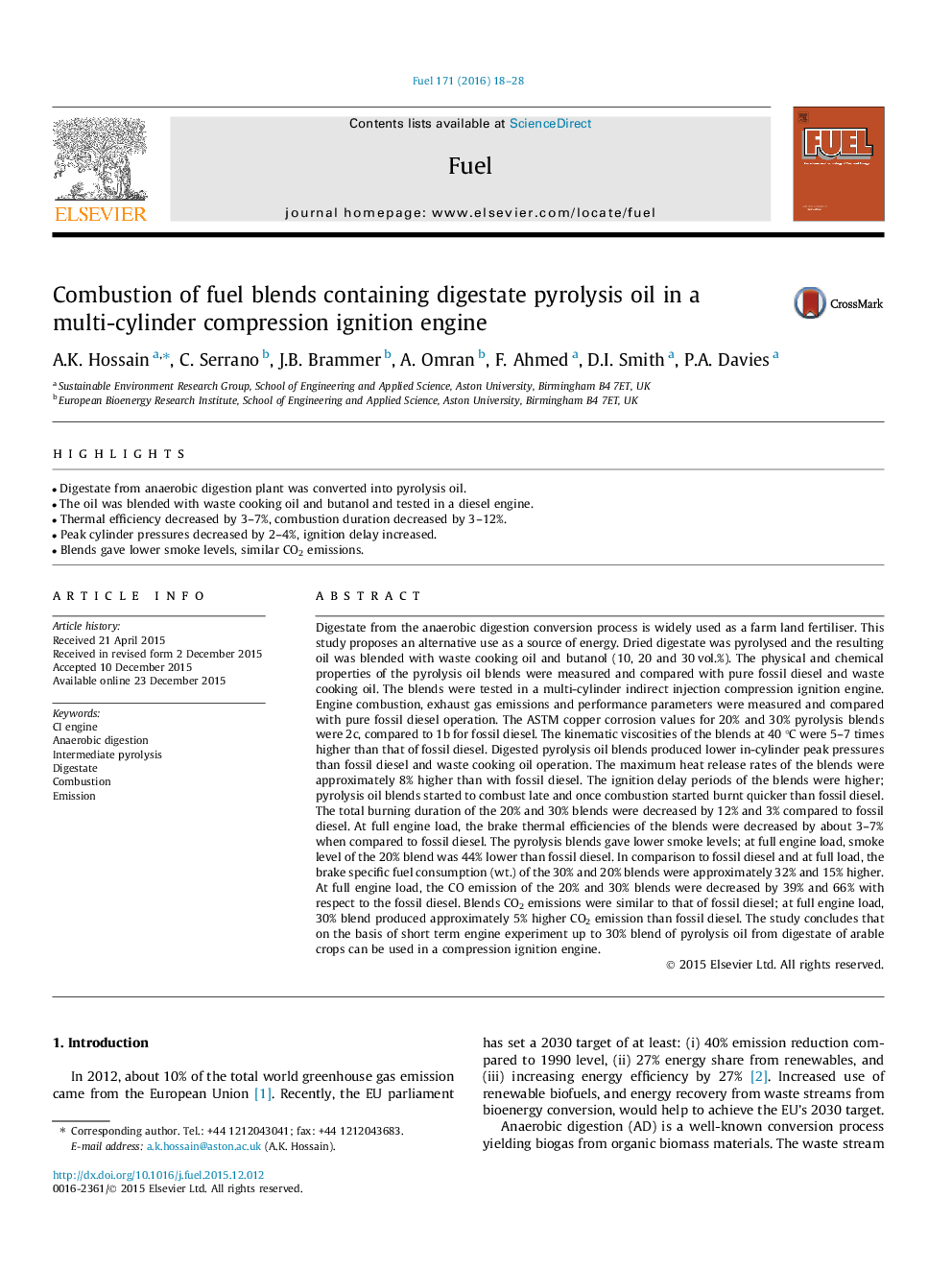| کد مقاله | کد نشریه | سال انتشار | مقاله انگلیسی | نسخه تمام متن |
|---|---|---|---|---|
| 205252 | 461102 | 2016 | 11 صفحه PDF | دانلود رایگان |
• Digestate from anaerobic digestion plant was converted into pyrolysis oil.
• The oil was blended with waste cooking oil and butanol and tested in a diesel engine.
• Thermal efficiency decreased by 3–7%, combustion duration decreased by 3–12%.
• Peak cylinder pressures decreased by 2–4%, ignition delay increased.
• Blends gave lower smoke levels, similar CO2 emissions.
Digestate from the anaerobic digestion conversion process is widely used as a farm land fertiliser. This study proposes an alternative use as a source of energy. Dried digestate was pyrolysed and the resulting oil was blended with waste cooking oil and butanol (10, 20 and 30 vol.%). The physical and chemical properties of the pyrolysis oil blends were measured and compared with pure fossil diesel and waste cooking oil. The blends were tested in a multi-cylinder indirect injection compression ignition engine. Engine combustion, exhaust gas emissions and performance parameters were measured and compared with pure fossil diesel operation. The ASTM copper corrosion values for 20% and 30% pyrolysis blends were 2c, compared to 1b for fossil diesel. The kinematic viscosities of the blends at 40 °C were 5–7 times higher than that of fossil diesel. Digested pyrolysis oil blends produced lower in-cylinder peak pressures than fossil diesel and waste cooking oil operation. The maximum heat release rates of the blends were approximately 8% higher than with fossil diesel. The ignition delay periods of the blends were higher; pyrolysis oil blends started to combust late and once combustion started burnt quicker than fossil diesel. The total burning duration of the 20% and 30% blends were decreased by 12% and 3% compared to fossil diesel. At full engine load, the brake thermal efficiencies of the blends were decreased by about 3–7% when compared to fossil diesel. The pyrolysis blends gave lower smoke levels; at full engine load, smoke level of the 20% blend was 44% lower than fossil diesel. In comparison to fossil diesel and at full load, the brake specific fuel consumption (wt.) of the 30% and 20% blends were approximately 32% and 15% higher. At full engine load, the CO emission of the 20% and 30% blends were decreased by 39% and 66% with respect to the fossil diesel. Blends CO2 emissions were similar to that of fossil diesel; at full engine load, 30% blend produced approximately 5% higher CO2 emission than fossil diesel. The study concludes that on the basis of short term engine experiment up to 30% blend of pyrolysis oil from digestate of arable crops can be used in a compression ignition engine.
Journal: Fuel - Volume 171, 1 May 2016, Pages 18–28
